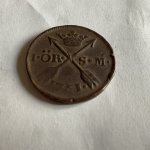Matteo La Boccia
Sr. Member
Among the many events of the World War II it seems difficult to find a connection between the Greek campaign, the landing in Salerno and the Holocaust. Yet, a small discovery made by Luigi Fortunato a member of the Salerno 1943 association, a group of volunteers who recover the traces of the Avalanche operation, has connected these 3 episodes. It is an oval silver-colored metal pin found together with military equipment near a German trench. On the front is reproduced the Aslan Pashà mosque, a building built by the Ottomans in Ioannina (Ioannina), Greece, in 1618. At the top there is the inscription KYRA FROSINI IOANNINA which commemorates Euphrosyne Vasileiou, better known as Kyra Frosini, a Greek noblewoman believed to have been executed for political reasons by Aslan Pashà and that for this reason in Greece she is considered a national heroine.
How and why did this Greek pin arrive in Salerno? The city of Ioannina was the scene, in April 1941, of violent fighting between the Greek armed forces on one side and the Italian and German SS-Leibstandarte "Adolf Hitler" on the other. On April 19 the Germans took the city, thus completing the encirclement of the two Greek armies deployed against the Italians. The next day, in the same city, senior officers of the Greek army met with those of the Wehrmacht to discuss the armistice. It was ratified on 21 April in Larissa, at the command of von List's 12th German army, with Germany only, excluding the Italians from the agreement. Mussolini, however, full of indignation for that unilateral act, did not accept its terms and protested with Hitler, obtaining that the ceremony will be repeated on April 23 in the presence of Italian representatives in a villa near Thessaloniki. It's reasonable to suppose that one of the German soldiers present in Ioannina in those days had taken a souvenir in memory of the battle that took place there. It was in fact very common among World War II soldiers to keep a family heirloom as a ring, a bracelet or a pin, which recalled the region or city of the battles in which he had participated. It can be supposed that, later, this soldier took part in the fighting that took place in the hills of Salerno in September 1943 where he lost the Greek souvenir with part of his equipment.
But how does this find relate to the Shoah? During the war there was no Jewish community in Salerno. In the town, Jews had been present since ancient times, were relegated to a ghetto located in the part most exposed to the dangers coming from the sea, that is now known as Vicolo Giudaica. The Salerno Jews experienced periods of relative peace alternating with periods of intense persecution and serious humiliation such as, for example, when the rabbi was obliged to offer his head as a lectern for reading the Gospel on the eve of the feast of St. Matthew in front of the door of the Lions of the Cathedral. The Jews disappeared from Salerno in 1541 when they were expelled from all of Southern Italy by the Emperor Charles V. Many found refuge in Greece where, under Ottoman rule, they were granted freedom of religion, they could carry out various jobs and manage independently their communities.
Yet this pin found in Salerno remember the Jewish extermination due to what happened in the 1940s in Ioannina. It was part of the territory occupied by the Italians. After the battle, life resumed relatively pacefully for its inhabitants. In the city there was a large community of Romani Jews. They were Jews present in Greece for over 2000 years who had adopted the Greek language and customs while maintaining Jewish traditions and language in worship. As long as the troops of the Royal Army were present in the area they had no particular problems although deportation to the extermination camps had already begun in the regions occupied by the Germans. Things changed drastically after the fall of Mussolini and the consequent armistice of 8 September 1943. With the disappearance of the Italian military, the whole of Greece and therefore also Ioannina came under Nazi control.
The Germans led by General Jurgen von Stettner occupied the city. From the very beginning they induced Sabbethai Kambilis, a leading member of the Jewish community to believe that Jews would be safe from persecution if they obeyed the orders given by the occupation forces. Despite the first German assurances, things have worsened. A synagogue was destroyed and, in March 1944, all Jewish families were registered and their houses marked with crosses. Those who didn't trust the Nazi promises were hiding.
On March 25, 1944, all the Jews of Ioannina were forcibly driven from their homes and gathered in Mavilis Square and at the Military Hospital. They were only allowed to carry one piece of hand luggage. The husbands were separated from their wives and children and that caused the first traumas as evidenced by some dramatic photos taken by a German soldier and preserved at the Bundesarchiv in Koblenz. They were all loaded on trucks that took them first to Trikala and then to Larissa, and from there, in appalling conditions, on a train to Auschwitz where they arrived on April 11. Of the 1,870 men, women and children deported that day, only 112 survived.
The Jews of Ioannina were among the millions of victims of the Holocaust. The gigantic killing machine created by Hitler and his hierarchs killed many people simply for what they were, as in the case of the Jews, Gypsies and Slavs. Many others were exterminated for what they did, for example political opponents or homosexuals. Still others were persecuted for what they refused to do as did conscientious objectors and Jehovah's Witnesses who didn't take up arms against others and didn't support Nazi policy.
This small discovery of the Salerno 1943 association thus becomes a silent but significant testimony of the tragic years of the World War II and combines three seemingly unrelated events.
How and why did this Greek pin arrive in Salerno? The city of Ioannina was the scene, in April 1941, of violent fighting between the Greek armed forces on one side and the Italian and German SS-Leibstandarte "Adolf Hitler" on the other. On April 19 the Germans took the city, thus completing the encirclement of the two Greek armies deployed against the Italians. The next day, in the same city, senior officers of the Greek army met with those of the Wehrmacht to discuss the armistice. It was ratified on 21 April in Larissa, at the command of von List's 12th German army, with Germany only, excluding the Italians from the agreement. Mussolini, however, full of indignation for that unilateral act, did not accept its terms and protested with Hitler, obtaining that the ceremony will be repeated on April 23 in the presence of Italian representatives in a villa near Thessaloniki. It's reasonable to suppose that one of the German soldiers present in Ioannina in those days had taken a souvenir in memory of the battle that took place there. It was in fact very common among World War II soldiers to keep a family heirloom as a ring, a bracelet or a pin, which recalled the region or city of the battles in which he had participated. It can be supposed that, later, this soldier took part in the fighting that took place in the hills of Salerno in September 1943 where he lost the Greek souvenir with part of his equipment.
But how does this find relate to the Shoah? During the war there was no Jewish community in Salerno. In the town, Jews had been present since ancient times, were relegated to a ghetto located in the part most exposed to the dangers coming from the sea, that is now known as Vicolo Giudaica. The Salerno Jews experienced periods of relative peace alternating with periods of intense persecution and serious humiliation such as, for example, when the rabbi was obliged to offer his head as a lectern for reading the Gospel on the eve of the feast of St. Matthew in front of the door of the Lions of the Cathedral. The Jews disappeared from Salerno in 1541 when they were expelled from all of Southern Italy by the Emperor Charles V. Many found refuge in Greece where, under Ottoman rule, they were granted freedom of religion, they could carry out various jobs and manage independently their communities.
Yet this pin found in Salerno remember the Jewish extermination due to what happened in the 1940s in Ioannina. It was part of the territory occupied by the Italians. After the battle, life resumed relatively pacefully for its inhabitants. In the city there was a large community of Romani Jews. They were Jews present in Greece for over 2000 years who had adopted the Greek language and customs while maintaining Jewish traditions and language in worship. As long as the troops of the Royal Army were present in the area they had no particular problems although deportation to the extermination camps had already begun in the regions occupied by the Germans. Things changed drastically after the fall of Mussolini and the consequent armistice of 8 September 1943. With the disappearance of the Italian military, the whole of Greece and therefore also Ioannina came under Nazi control.
The Germans led by General Jurgen von Stettner occupied the city. From the very beginning they induced Sabbethai Kambilis, a leading member of the Jewish community to believe that Jews would be safe from persecution if they obeyed the orders given by the occupation forces. Despite the first German assurances, things have worsened. A synagogue was destroyed and, in March 1944, all Jewish families were registered and their houses marked with crosses. Those who didn't trust the Nazi promises were hiding.
On March 25, 1944, all the Jews of Ioannina were forcibly driven from their homes and gathered in Mavilis Square and at the Military Hospital. They were only allowed to carry one piece of hand luggage. The husbands were separated from their wives and children and that caused the first traumas as evidenced by some dramatic photos taken by a German soldier and preserved at the Bundesarchiv in Koblenz. They were all loaded on trucks that took them first to Trikala and then to Larissa, and from there, in appalling conditions, on a train to Auschwitz where they arrived on April 11. Of the 1,870 men, women and children deported that day, only 112 survived.
The Jews of Ioannina were among the millions of victims of the Holocaust. The gigantic killing machine created by Hitler and his hierarchs killed many people simply for what they were, as in the case of the Jews, Gypsies and Slavs. Many others were exterminated for what they did, for example political opponents or homosexuals. Still others were persecuted for what they refused to do as did conscientious objectors and Jehovah's Witnesses who didn't take up arms against others and didn't support Nazi policy.
This small discovery of the Salerno 1943 association thus becomes a silent but significant testimony of the tragic years of the World War II and combines three seemingly unrelated events.
Attachments
-
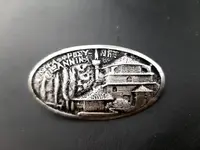 IOANNINA spilla.jpg124.6 KB · Views: 87
IOANNINA spilla.jpg124.6 KB · Views: 87 -
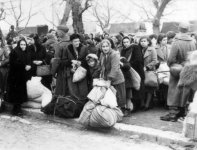 IOANNINA Bundesarchiv, Bild 101I-179-1575-02 - Wetzel - CC-BY-SA 3.0.jpg65.2 KB · Views: 51
IOANNINA Bundesarchiv, Bild 101I-179-1575-02 - Wetzel - CC-BY-SA 3.0.jpg65.2 KB · Views: 51 -
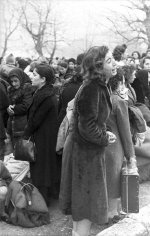 IOANNINA Bundesarchiv, Bild 101I-179-1575-08 - Wetzel - CC-BY-SA 3.0.jpg48.7 KB · Views: 50
IOANNINA Bundesarchiv, Bild 101I-179-1575-08 - Wetzel - CC-BY-SA 3.0.jpg48.7 KB · Views: 50 -
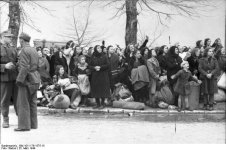 IOANNINA Bundesarchiv_Bild_101I-179-1575-15,_Ioannina,_Deportation_von_Juden.jpg65.4 KB · Views: 52
IOANNINA Bundesarchiv_Bild_101I-179-1575-15,_Ioannina,_Deportation_von_Juden.jpg65.4 KB · Views: 52 -
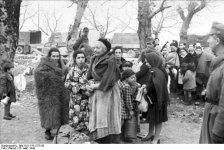 IOANNINA Bundesarchiv_Bild_101I-179-1575-20,_Ioannina,_Deportation_von_Juden.jpg75.2 KB · Views: 49
IOANNINA Bundesarchiv_Bild_101I-179-1575-20,_Ioannina,_Deportation_von_Juden.jpg75.2 KB · Views: 49 -
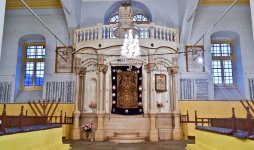 IOANNINA Sinagoga (2).jpg147.4 KB · Views: 45
IOANNINA Sinagoga (2).jpg147.4 KB · Views: 45
Upvote
3



